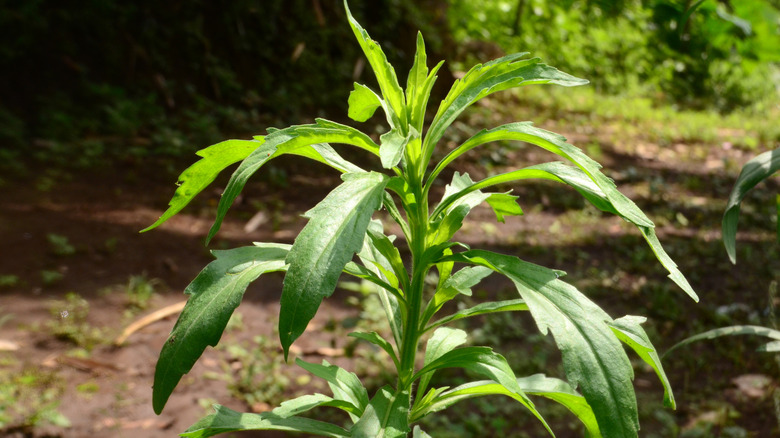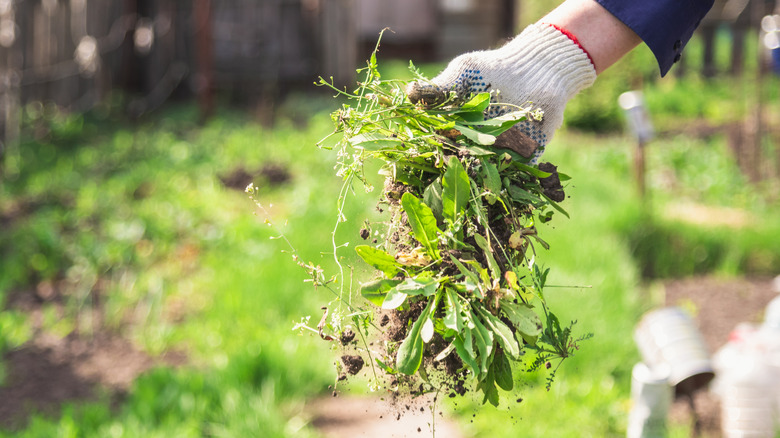How To Identify Horseweed In Your Yard (& The Best Way To Get Rid Of It)
Let's set the stage: You're out in your yard basking in the sunlight, when suddenly, you spot a tall, gangly plant giving you the evil eye. Meet horseweed — the uninvited guest that loves to crash your garden party. Horseweed is a stubborn weed that is difficult to remove. It has a knack for thriving in disturbed soils, which is a fancy way of saying it loves gardens, fields, and roadsides. It grows aggressively and can quickly overrun your beautiful yard if left unchecked. And, if you're living anywhere from Canada down to Central America, congratulations — you're in prime horseweed territory.
It is especially problematic in agricultural settings, where this sneaky weed wreaks havoc by competing with crops for nutrients and water, making it a farmer's nightmare. That means you will want to get rid of it by hand pulling seedlings or using chemicals, but first, you have to identify it!
How can you identify horseweed?
Spotting horseweed in your yard is like playing a game of "Where's Waldo?" but with a lot more green and a lot less fun. Look for a plant with a single, erect stem that becomes branched at the top. The leaves are narrow, lance or football-shaped, and arranged alternately along the stem. If it's young, horseweed will form a rosette of leaves close to the ground. By the time it matures, it will shoot upwards, producing small white or pinkish-red flowers. While that might sound pretty, in a way, it is a sign of bad things to come: when horseweed begins seeding, it can be very difficult to remove completely.
Why should you care about this weed? For starters, it's a resource hog. Horseweed competes with your grass and plants for sunlight, water, and nutrients, which means your lawn isn't getting what it needs to thrive. What's worse, horseweed contains allelopathic toxins that actually prevent nearby growth of native vegetation. Not to mention, it's an eyesore. A yard infested with horseweed looks like something out of a horror movie featuring angry plants, meaning you will want to get rid of it as fast as you can.
How do you get rid of horseweed?
Now, let's talk about how to give horseweed the boot. The best method to get rid of horseweed is to pull up the seedlings while they're still young and manageable. Think of it as nipping the problem in the bud — literally. But be thorough: If you leave the stems or roots in the soil, this sneaky plant might continue to grow throughout its season. The goal is to yank it out before it gets a chance to flower and spread its seeds.
However, if hand-pulling sounds like too much manual labor, there are chemical options for getting rid of weeds in your garden. Herbicides like 2,4-D and Triclopyr, found in products such as Crossbow and Speedzone, are effective at killing horseweed. Timing is crucial, though. Target the plant during its fall rosette stage with a post-emergent herbicide for best results. Pre-emergent herbicides can also be applied in the fall to prevent the weed from emerging in the first place.
But beware of Glyphosate! While it's a common herbicide, it has carcinogenic properties, and, fun fact, some horseweed species have developed resistance to it. Stick to safer, more effective methods for a healthier yard and you.


